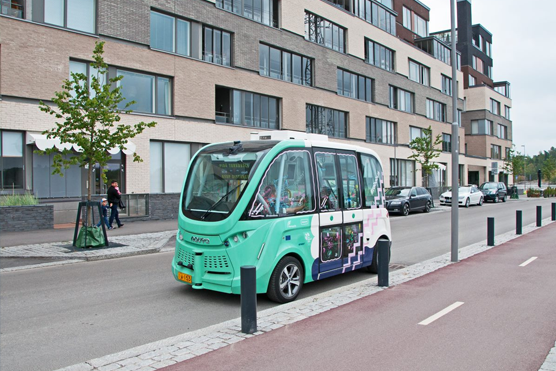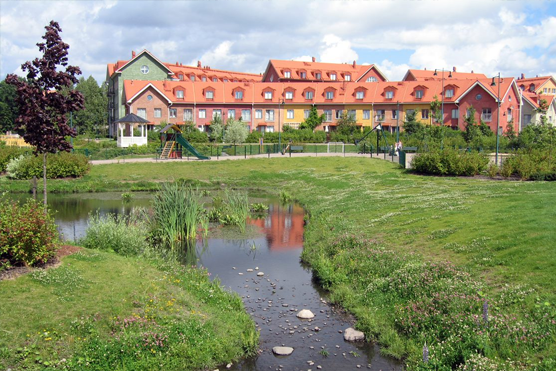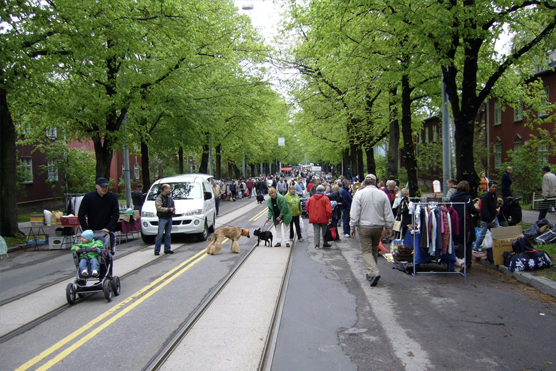Discovering travel-related zones in the urban form

© Sini Leskinen
SYKE has been developing urban and regional classifications for over 20 years. The idea of three urban fabrics (walking, transit and automobile urban fabrics) is based on the work of Newman and Kenworthy was adopted and further developed by SYKE as a method to analyze Finnish cities with uniform criteria.
The urban fabrics concept rejects the modern interpretation of urban structure as a system of separate functions. Rather, urban form composes of three overlapping fabrics that are a result of different path dependencies embedded in the urban form. Each fabric has unique characteristics of modal share, population/workplace densities, accessibility, commuting patterns, migration, population/household structure, car dependency and neighbourhood diversity.
Identifying the fabrics is key to understanding the available paths to sustainable transport. Promoting healthy and sustainable transport modes, walking and cycling, require a different approach in the areas ‘walking city’ and ‘automobile city’.
Information system open to everyone
The development of 34 Finnish urban regions has been studied by dividing them into travel-related urban zones according to their location in the urban form and their public transport supply. GIS datasets of these zones are updated annually. The analyses and datasets are collected in an information system shared as open data. Also, several national reports as well as numerous scientific reports have ensued.
Notably, the master plan processes of Helsinki and Lahti, and the monitoring master and detailed plans in Lahti make use of the urban zone datasets. Especially the public transport zone has been adopted as a general concept to understand the connection between land use and the public transport system.
The results of predicting the future development of urban form were used in the process of renewing national land use guidelines. At the moment, they are noted in the renewing process of the Land Use and Building Act.
For more on the impacts:
Decarbonizing the building stock

© Pirjo Ferin
SYKE has attained a major role in decarbonizing the building sector – a crucially important target for Finland who aims to reach carbon neutrality by 2035. Although the economic benefits of upscaling the building stock has activated related business, progress has not been fast enough.
SYKE's understanding of low-carbon construction practices and building policies, and the related social and technological transitions, has reached new levels since 2015 when SYKE started a series of projects aiming at decarbonizing the building sector.
SYKE's efforts in low-carbon building range from climate-smart construction projects to national policies and strategies. New instruments and priorities have already been set: subsidies for retrofitting were introduced in 2020, and policy preparations are under way to phase out oil as heating fuel.
Through its calculating work SYKE has played an important role in setting goals for the Long-term Renovation Strategy for Finland. The work which was carried out in collaboration with the Ministry of the Environment and relevant stakeholders, included targets for energy use, emissions and energy efficiency of buildings up to 2050. The Strategy guides the decarbonization of the current building stock in Finland.
The findings of SYKE's projects have been put into practice in several cities and towns around the country. The city of Helsinki has gained instruments to reduce the carbon footprint of new residential areas, while in Lohja low-carbon practices are applied to the 2021 Housing Fair which the town will host.
SYKE's experts have also spurred local authorities towards low-carbon building by providing them climate-smart options and by calculating carbon footprints. Hence, new low-carbon schools and kindergartens have been built along with a new low-carbon church building. SYKE's experts have similarly encouraged local governments to renovate existing buildings, and to adopt other low-carbon practices and plans.
Telling city hall just how to embrace fourth sector civic activists

© Päivi Tahvanainen
SYKE and the University of Helsinki Department of Social Research partnered in the research and development project 'Civic Activism as Resource for the Metropolis’ in 2015-2017.
The project ensued from the hypothesis that civil society had remarkably changed in the digital age as new network-based bottom-up forms of civic action emerge beside traditional NGOs. The change challenges governance, democracy and markets, but is an avenue for cities to better environment, inclusiveness and innovation. The new, digitally boosted action was conceptualized as the ‘fourth sector’. The project told cities how to support the new forms of civic action.
Support project for cities
The project had a direct impact on the citizen participation model of the city of Helsinki. Among others, Seinäjoki and Tampere have noted it in their models and practices. In 2020, Tampere and Oulu participated in and commended the civic involvement support project by SYKE. The concept has inspired several research proposals, funded projects, articles and discussion in social media.
For more on the impacts:
- The two main outputs are the civicactivism.fi information bank and a book on the rise of the fourth sector (Mäenpää, P. & Faehnle, M. Neljäs sektori – kuinka kaupunkiaktivismi haastaa hallinnon, muuttaa markkinat ja laajentaa demokratiaa. Vastapaino, to be published in 2020).
- The project also published the second Finnish book on Collaborative Economy (Harmaala, M.-M., Toivola, T., Faehnle, M., Manninen, P., Mäenpää, P., & Nylund, M. 2017. Jakamistalous. Alma Talent, Helsinki) and established the Finnish R&D network on collaborative economy.
- Knowledge was created and shared in action research with cities and civic activists. It was reported in numerous presentations, lectures, professional publications, a scientific article and in Twitter #kaupunkiaktivismi and Facebook groups and in channels of the partnering cities. The three FB groups established by the project are still active in 2020.
- The article (Mäenpää, P. & Faehnle, M. 2017. Itseorganisoituva kaupunki: hallinta, talous ja demokratia. Futura 36:4, 28-40) was awarded as the Finnish Urban Research Article of 2017.